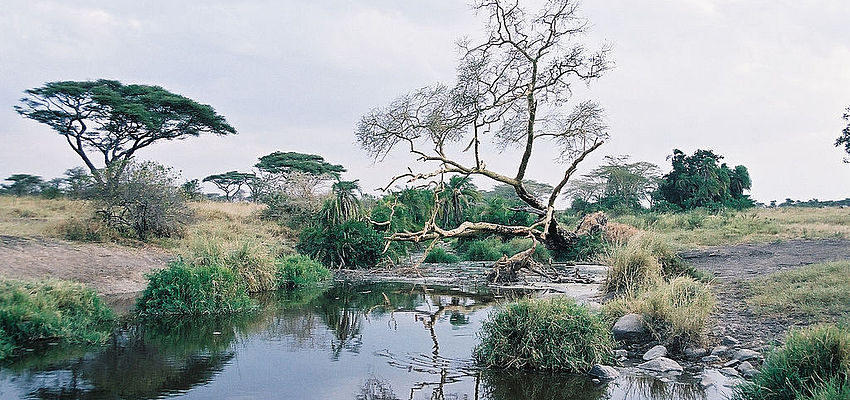


Before then the Bantus and Masai roamed its plains...
In 1964, the colony of Tanganyika and the Sultanate of Zanzibar became the United Republic of Tanzania. It was an English family of paleontologists, the Leakeys, who, in the 60's, discovered skeletal remains that dated back several milliion years. It was a defining moment in the history of mankind.
During the first millenium (BCE), central African Bantus arrived, bringing with them farming techniques and Iron Age technology. The Masai appeared the 17th Century, shortly before the Ngoni tribes. At the same time Arabic sailors began to settle on the coast. Gold mining, along with a flourishing ivory and slave trade, allowed them to construct monumental palaces and mosques. The Swahili language, a blend of Arabic and Bantu, evolved. Kilwa, the former flagship city
The Portuguese arrived in the 15th Century, seizing ports along the way. They overtook Zanzibar, but the Sultanate of Oman drove them out and, during the 17th Century, established a major slave trading post. Later Tanganyika and Zanzibar fell under German control, which lasted until the end of the First World War. Tanzania, along with other African colonies ruled by Germany, were placed under the authority of the League of Nations. This was how Tanganyika became an English colony, whilst Rwanda and Burundi fell under Belgian rule.
In 1926 a Legislative Council was established. Central Africans finally began to return home at the end of the Second World War. In 1954, Julius Nyerere, a Catholic teacher, formed the Tanganyika African National Union (TANU), which in 1960 won the elections, beating the Legislative Council in the process. Nyere became the country's first Prime Minister and in 1961 Tanzania won its independence. Zanzibar followed suit two years later. This was followed by a communist uprising that saw the massacre of thousands of Arabs and the rapid departure of the Sultan. In 1964 Tanganyika and Zanzibar formed a union, becoming the United Republic of Tanzania. Abeid Karume later established a dictatorship, but was assasinated in 1972 and replaced by his deputy, Aboud Jumbe.

In 1977 a new Constitution was drawn up. At the same time Tanzania became a stalwart supporter, alongside other nations, of the anti-apartheid movement that was growing in South Africa. In 1985 the president of Zanzibar took office. An Islamic separatist revolt saw relations between Tanzania and Zanzibar degrade. As a result, a multi-party system was installed, but tension between Christians and Muslims on the continental side of the country continued to grow.
From 1995 the ruling government began to be accused of electoral fraud; suspicion grew and there were several clashes. Until his death in 1999, former President Nyerere sought an improvement in Tanzania's foreign policies. As part of this legacy, Tanzania, Kenya and Uganda signed a customs union agreement in order to form a common market; the EAC was thus born. Rwanda and Burundi joined this union in 2007. And in 1995, Jakay Kikwete was elected President. He fought corruption, promoted education and was subsequently re-elected in 2010.